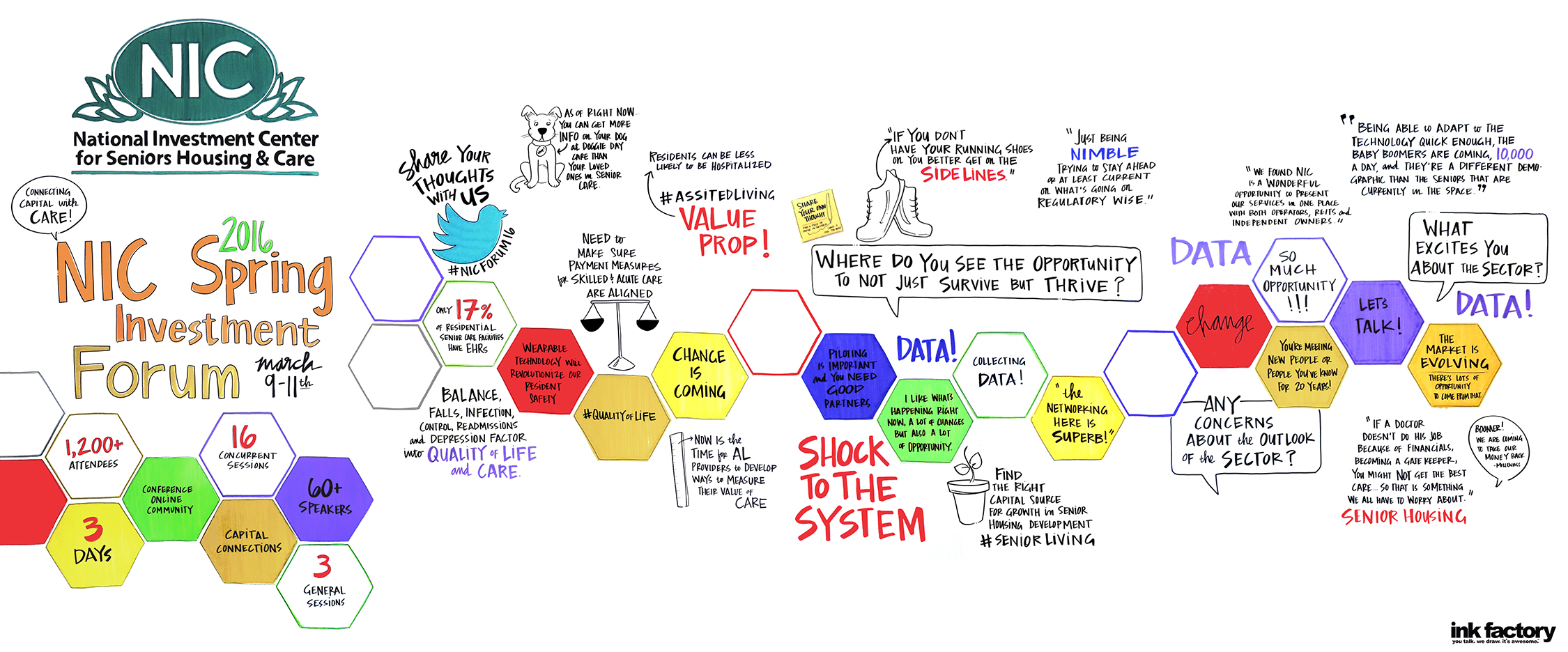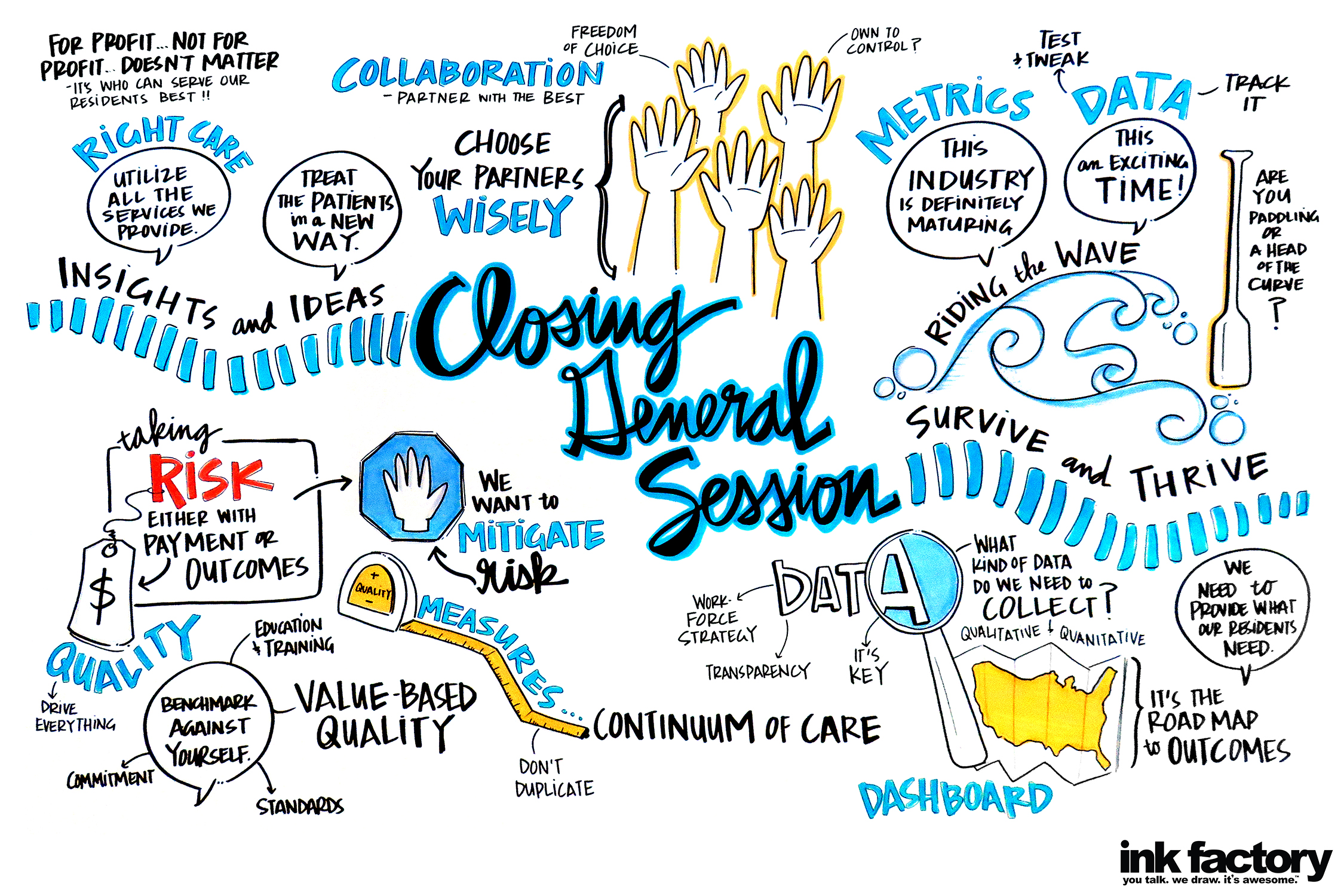Timing the Wave: Facing an Evolving Seniors Health Care Model

As the 2016 NIC Spring Investment Forum wrapped up on Friday, discussions revolved around the coming challenges and opportunities for seniors housing and care. The theme of change seemed to permeate the discussions during the three day event in Dallas, Texas.
One of the highlights of the 2016 NIC Spring Investment Forum was the Closing General Session. Facing an evolving seniors health care model, industry leaders convened to discuss the changing role of the industry. ”What models will prevail?” asked NIC CEO Bob Kramer. He was joined on the panel by the volunteer leaders of the sector’s major trade groups: Brenda Bacon of Argentum; Larry Cohen of ASHA; Tom Coble of AHCA; and Kathryn Roberts of LeadingAge.
Acknowledging a fair amount of uncertainty, panelists agreed that it was crucial to measure quality and create consistent measures. But they worry that assisted living could become a medical model that consumers have sought to avoid. Larry Cohen, CEO, Capital Senior Living Corporation commented “15 years ago residents who moved into senior living were 78 years of age, today that age cohort is remaining in their home.”
As the median age of new assisted living residents’ increases, so does the level of resident acuity, which is impacted further by limitations in the services assisted living nurses can provide. As it stands today, assisted living communities are often made to make a decision to hire a registered nurse or have residents travel off-site to receive non-invasive health services. Nearly all assisted living communities employ personal care aides in addition to nurses to assist with the ADLs. By 2020, there will be 1.6 million job openings for nurses in the U.S., making recruitment and retention for assisted living communities’ priority. Brenda Bacon, President and CEO, Brandywine Senior Living said “Workforce development is key, a lot of what we discussed here today rests on how well we are able to recruit.”
 Some feel the rise in high acuity residents and limitations on assisted living care givers has forced residents with greater health needs into skilled nursing properties too soon. However, on the flip side, others see this as an opportunity for assisted living communities to partner with skilled nursing properties.
Some feel the rise in high acuity residents and limitations on assisted living care givers has forced residents with greater health needs into skilled nursing properties too soon. However, on the flip side, others see this as an opportunity for assisted living communities to partner with skilled nursing properties.
Medical care is the usual focus of research primarily due to the fact that it is regulated and because payers, such as Medicare and Medicaid have an interest in cost/benefit analysis, but recently researchers have shifted focus to nonmedical “quality of life versus quality of care” aspects of senior living. Its’ through relationships, routines, mealtimes and activities that overall satisfaction with life can be determined. These factors translate into healthier elder years with lower rates of depression and reduced health risks. Tom C. Coble, President, Elmbrook Management Company stated “Quality is the driver of it all and what we need to focus on.”
It seems at the heart of success is the alignment of quality & measures. However, even with this focus Kathryn Roberts, President and CEO, Ecumen stated “We are fooling ourselves if we think that assisted living is not institutionalized care.” Even a recent Forbes article What Assisted Living and other Residental Care Looks Like referenced assisted living as the new nursing home.
Assisted living providers could make more of a concerted effort to develop practices that provide residents with more social an emotional resources that will help them engage in meaningful social interactions. Now is the time for assisted living providers to develop ways to measure the value of care.
Within their associations, each volunteer leader is looking toward the future, with LeadingAge seeking to change the funding model for long term care by running scenarios of seven alternatives. AHSA is working on several initiatives to increase penetration rates and improve the perception of senior living by elders and their families. There’s a focus on workforce development at Argentum, as well as moving toward self-regulation to avoid some regulatory restraints seen in skilled nursing. And at AHCA, quality, new payment models, and member education are top priorities.
One thing is clear, the industry is maturing and we are entering an exciting time to revolutionize the way senior care is delivered and measured to provide quality outcomes. If you don’t have your running shoes on you’d better get on the sidelines, change is coming and it’s coming fast!
Day 3 Highlights: 2016 NIC Spring Investment Forum from National Investment Center on Vimeo.
